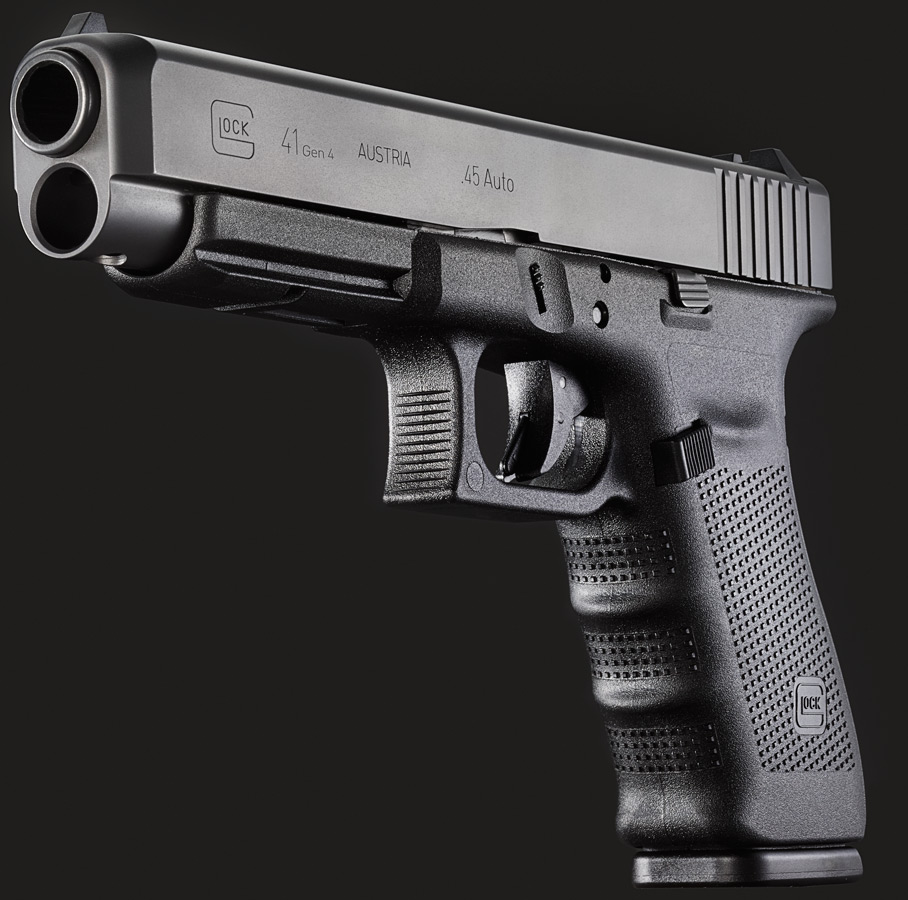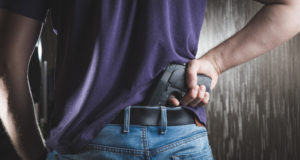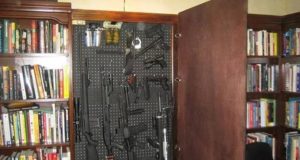|
Listen To The Article
|
News flash: There’s been almost a century-long debate on which is the best caliber for CCW. Groundbreaking stuff, right?
Well, if I’m going to contribute to the conversation on this one, then here’s my thoughts: There is no single perfect round, in the same way that there’s no single perfect survival knife. If anything, perfection in this case is situationally dependent — meaning that perfection in a CCW round for one person may be the exact opposite to what perfection means for someone else.
Additionally, one of the variables in our ongoing search for personal CCW perfection has to do with the changing seasons. Given how we’re finding ourselves peering down the barrel of winter, I feel it’s time for us to gear up and get our CCW needs squared away. And this is why I, personally, am a fan of the 45 ACP for the application of winter concealed-carry. Here are my reasons …
It’s High Time For a Full-Size
Though the Bob Munden-types may be able to put a .38 Special round on a pie plate-sized target from 200 yards off with a “belly gun,” for the rest of us it’s just easier to achieve better accuracy with a full-sized weapon. There’s greater distance between the front and rear sights, subsequent shots are easier to make with more weight at the muzzle. Therefore, you’ve got a greater contact area on a larger frame, allowing for increased stability and handling. At the end of the day, a full-sized handgun offers better shooting and easier shooting.
However, in the warmer months, it’s MUCH harder to successfully conceal a full-sized weapon under a T-shirt or light button-down — that is, unless you’re Lou Ferrigno. But in the winter, you have the option of wearing a blazer, thicker fleece jackets, etc., and fewer worries of the awkward hip bulge that seems to draw unwanted attention.
Speaking of drawing, on the other hand, some of us need to wear gloves when temps really take a dive. Try drawing effectively with gloves while carrying a compact handgun, and you probably know what I mean. And don’t attempt that last part if the weapon’s loaded … it’s just that clumsy of a situation. On a full-size weapon, however, this is actually a feasible possibility (with proper practice and training, of course).
Rounds Behave Differently Against Layers
When it comes to selecting a round, the primary issue is often centered around its capacity to effectively stop a person’s ability to present a lethal threat, once shot placement has successfully been achieved.
It’s really a question of velocity vs grains, the proper balance of which should lead to the necessary amount of energy transfer with just enough target penetration to get the job done. Often, the 45 ACP’s primary setback is the fact that it packs too much penetration power, and tends to exit the target, creating a dire situational need to watch the target’s background. This is one reason why concealed-carriers tend to opt for the more lightweight, higher-velocity semi-auto rounds: 9mm and 40 S&W.
Story continues below video
But in the winter, even potential lethal threats will be wearing additional and thicker layers of clothing: leather coats, lined parkas, etc. This means that either the velocity of the round needs to increase (+P), or the round itself needs to get heavier. The problem with higher velocities, however, has to do with fragmentation and the theoretical lack of energy-transfer that results. This is unfortunately one of the frustrations concerning the 9mm round.
With that in mind, a heavier round will maintain its power without the need for increased velocity. For instance, if a 45 ACP hollow-point has successfully been delivered on target, then something interesting should happen: the wad of clothing fibers that accumulates in the conical gap will not only cause the round to expand like a 9mm round. This should also prevent over-penetration of the target, thereby maximizing energy-transfer.
And when the physics makes tactical sense, that’s called “stopping power.”
A Few Considerations …
But, of course, no caliber is without problems. There are a few things to keep in mind with the 45 ACP.
It’s probably not much of a surprise that crime rates statistically fall during the colder months of the year, and this has been the case over the last 30 years. In short, you’re going to have a profoundly lower chance of encountering a lethal threat outdoors. However, the probability of indoor encounters will either not change or slightly increase. And that means you’re hypothetically going to have to fire a 45 ACP weapon indoors in a defensive encounter. Unfortunately, not an ideal situation, because again, over-penetration-power remains a problem.
Also, if you do encounter a lethal threat outdoors, then magazine capacity could pose a bit of a problem. Especially in the frigid cold, fingers go numb and the body is less responsive to motor commands from the brain. Important commands that you will depend on for accuracy when the adrenaline gets pumping. So in order to overcome this potential loss in accuracy, it’s just like everything else when it comes to firearms: train, train, train … and then train some more.
What is your preference for concealed carry during winter? Share your tips in the section below:
 Off The Grid News Better Ideas For Off The Grid Living
Off The Grid News Better Ideas For Off The Grid Living




